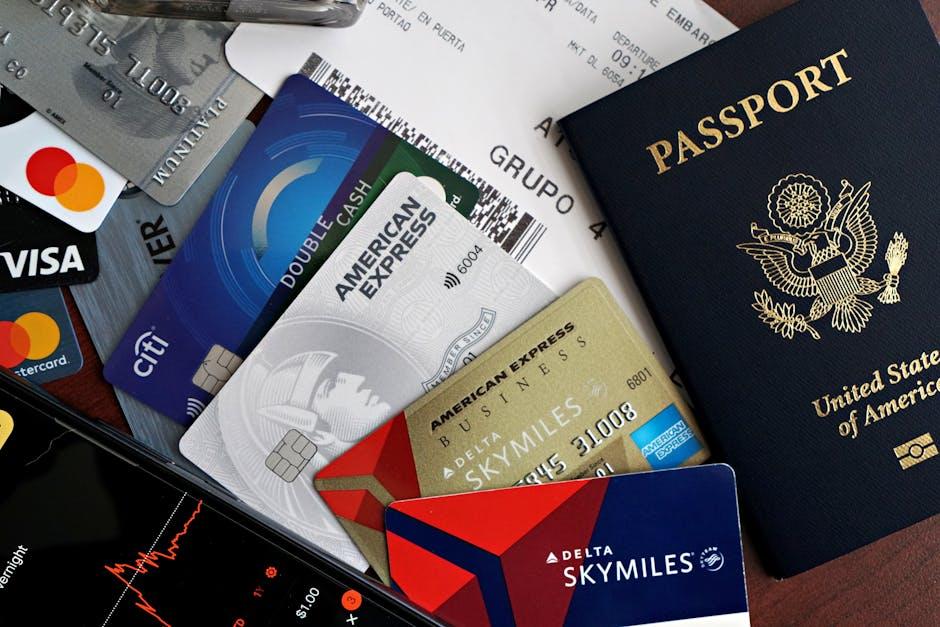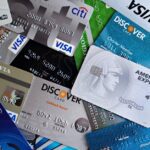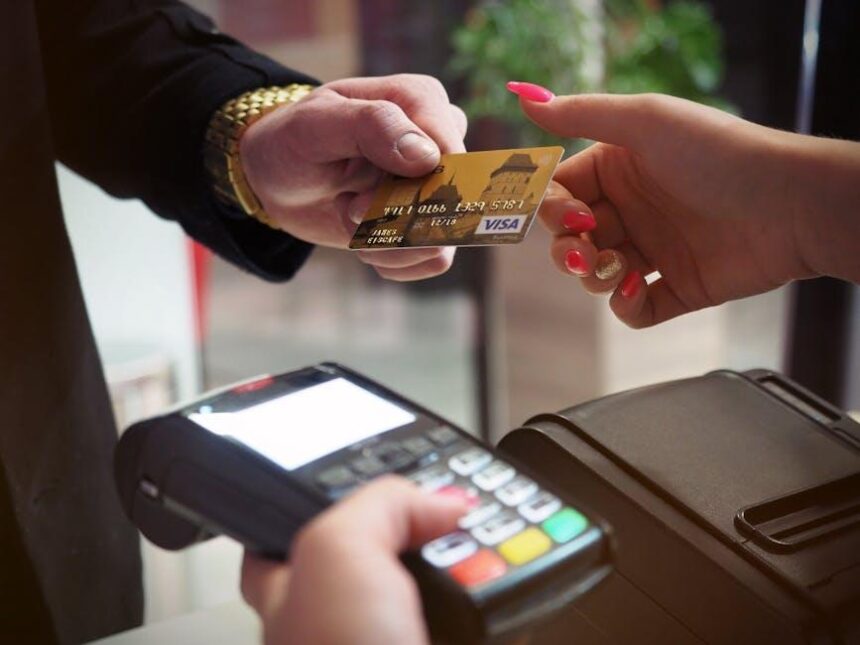In our increasingly digital world, the convenience of online shopping comes hand in hand with the lurking threat of credit card fraud. With fraudsters employing ever-evolving tactics, from skimming and identity theft to sneaky phishing attempts, it’s crucial to arm yourself with knowledge and proactive strategies to safeguard your financial information. This article unveils essential tips to help you navigate the online marketplace safely, ensuring that your credit card transactions remain secure and your peace of mind intact. Explore how you can fortify your defenses against these growing scams and enjoy the benefits of online shopping without compromise.
Recognizing the Red Flags of Online Credit Card Fraud
Online credit card fraud is a pervasive issue that can affect anyone. Recognizing the warning signs can be the first step towards protecting your financial information. Here are some red flags to be aware of:
- Unusual Account Activity: Regularly monitor your bank and credit card statements. If you see charges you didn’t make, it could indicate your card has been compromised.
- Phishing Attempts: Be cautious of emails or messages that request your personal information. These may appear to be from legitimate companies, but always verify through official channels.
- Unexpected Payment Requests: If you receive requests for payment from unfamiliar merchants, especially if they seem off, take a moment to investigate.
- Unsecured Websites: When shopping online, ensure the website URL begins with “https://” and displays a padlock icon in the address bar, which indicates a secure connection.
- Promotions That Seem Too Good to Be True: Be wary of offers that promise unrealistic discounts or free gifts. These could be traps to capture your credit card details.
- Frequent Password Resets: If you notice frequent prompts to reset passwords or unfamiliar password reset requests, this may indicate unauthorized access attempts.
To help illustrate these signs, consider the following table that highlights examples of common fraud tactics alongside their corresponding red flags:
| Fraud Tactic | Red Flag |
|---|---|
| Identity Theft | Missing bills or account statements |
| Phishing Scams | Emails from unrecognized addresses demanding urgent action |
| Online Purchases | Unfamiliar charges on your statement |
| Credit Card Skimming | Unusual devices on ATMs or card readers |
By being vigilant and identifying these red flags early, you can take swift action to secure your financial information and mitigate potential losses.

Strengthening Your Online Security Measures
Enhancing your online security measures is crucial in today’s digital landscape, especially when it comes to safeguarding your credit card information. Here are some effective strategies you can implement to fortify your defenses:
- Use Strong Passwords: Create unique passwords that combine letters, numbers, and symbols. Avoid using easily guessable information like birthdays or names.
- Enable Two-Factor Authentication (2FA): If available, activate 2FA on your accounts. This adds an extra layer of protection by requiring a second form of verification beyond your password.
- Monitor Your Accounts Regularly: Frequently check your bank and credit card statements for unauthorized transactions. Report any suspicious activity immediately.
- Utilize Secure Connections: Always use a secure Wi-Fi connection when shopping online. Avoid public networks that can compromise your information.
- Be Wary of Phishing Scams: Click on links only from verified sources. Be cautious of emails or texts requesting sensitive information.
- Keep Software Updated: Ensure all your devices have the latest security updates and antivirus software installed to protect against vulnerabilities.
- Use Virtual Credit Cards: Consider using virtual credit card numbers provided by your bank for online transactions. These temporary numbers can help protect your actual card information.
| Security Measure | Description |
|---|---|
| Strong Passwords | Complex passwords resist brute-force attacks. |
| Two-Factor Authentication | Requires a second verification method, increasing security. |
| Account Monitoring | Regular checks help catch fraud early. |
| Secure Connections | Avoids interception of sensitive data over unsecured networks. |
| Phishing Awareness | Protects against scams designed to steal your information. |
| Software Updates | Ensures protection against newly discovered vulnerabilities. |
| Virtual Credit Cards | Limits exposure by using temporary numbers for purchases. |

Smart Shopping Habits to Minimize Risk
When shopping online, adopting smart habits can significantly reduce your risk of credit card fraud. Here are some actionable tips to help you stay safe while enjoying your online shopping experience:
- Use Credit Over Debit: Credit cards often offer better fraud protection than debit cards. If your credit card information is compromised, you’re generally not liable for unauthorized purchases.
- Shop with Trusted Retailers: Stick to well-known websites with a secure and reputable presence. Look for the HTTPS in the URL, indicating a secure connection.
- Enable Two-Factor Authentication: For accounts where you store financial information, enable two-factor authentication (2FA) to add an extra layer of security during login.
- Monitor Your Statements: Regularly check your bank and credit card statements for unauthorized transactions. Report any discrepancies immediately.
- Beware of Phishing Scams: Be cautious of emails or messages from unknown sources requesting personal information. Always verify the sender before clicking links or providing details.
- Limit Stored Payment Information: Avoid saving credit card information on multiple shopping sites. If you must save, use those with strong security measures.
- Create Strong Passwords: Use unique and complex passwords for your online shopping accounts. Consider using a password manager to keep track of them securely.
| Tip | Benefit |
|---|---|
| Use Credit Over Debit | Better fraud protections and no immediate funds lost |
| Shop with Trusted Retailers | Decreased risk of encountering fraudulent sites |
| Enable Two-Factor Authentication | Added security for sensitive accounts |
| Monitor Your Statements | Quick detection of unauthorized charges |
| Beware of Phishing Scams | Protection from identity theft |
| Limit Stored Payment Information | Reduces exposure of your financial data |
| Create Strong Passwords | Mitigates the risk of account hacking |
By incorporating these shopping habits into your routine, you can minimize your exposure to online fraud and protect your financial information more effectively.

Responding Effectively to Fraudulent Transactions
When you discover a fraudulent transaction on your credit card or bank account, swift action is crucial. Here’s how to respond effectively:
- Report Immediately: Contact your bank or credit card issuer at the number on the back of your card. Most institutions provide 24/7 support specifically for fraud concerns.
- Review Your Accounts: Check your recent transactions for any additional suspicious charges. Take notes of dates, amounts, and any pertinent details for reporting.
- Change Your Passwords: If you suspect your account has been compromised, update your online banking and shopping account passwords immediately. Use strong, unique passwords that combine letters, numbers, and special characters.
- Freeze Your Credit: To prevent further unauthorized access, consider placing a freeze on your credit report. This step requires lenders to verify your identity before extending credit, adding an extra layer of protection.
- File a Fraud Report: Create a report with the Federal Trade Commission (FTC) at IdentityTheft.gov. This will help guide you through the recovery process.
- Follow Up in Writing: After your phone call, send a written notice to your bank detailing the fraudulent transaction, including your account number and relevant details. This helps maintain a formal record of your issue.
In addition to these immediate steps, keeping an eye on your credit report is essential:
| Action | Frequency | Notes |
|---|---|---|
| Check Credit Report | Annually | Use AnnualCreditReport.com to access your report for free. |
| Monitor Credit Score | Monthly | Many credit card companies provide free score updates; keep track of any significant changes. |
Moreover, educate yourself on credit card fraud protection laws. Under the Fair Credit Billing Act (FCBA), your liability for fraudulent transactions is limited, generally to $50 if you report it promptly. Always keep a lookout for any communication from your bank, as they may have additional protective measures you can take.
Being proactive and well-informed is your best defense against credit fraud. By taking these steps, you enhance your security and reduce stress during a challenging situation.

The Way Forward
As we navigate the digital landscape, the importance of safeguarding our financial information cannot be overstated. By implementing the strategies discussed, you can create a robust defense against online credit card fraud, ensuring that your sensitive data remains secure. Remember, staying informed and proactive is your best line of defense. Continue to monitor your accounts, stay alert to potential threats, and educate yourself on emerging fraud techniques. With these tools in hand, you can confidently engage in the online marketplace while protecting what matters most-your financial peace of mind. Stay vigilant, stay safe!














